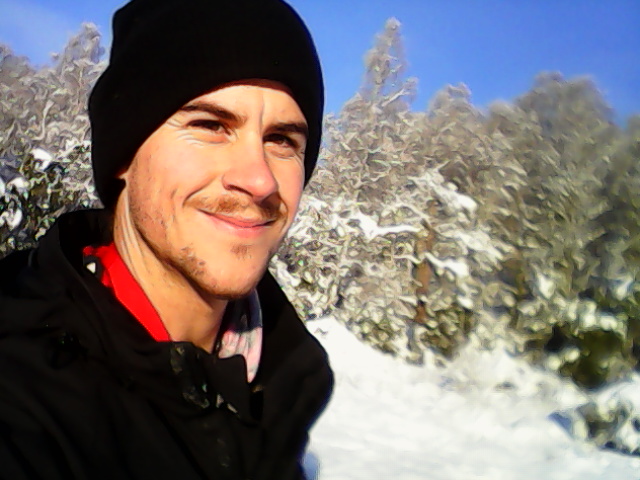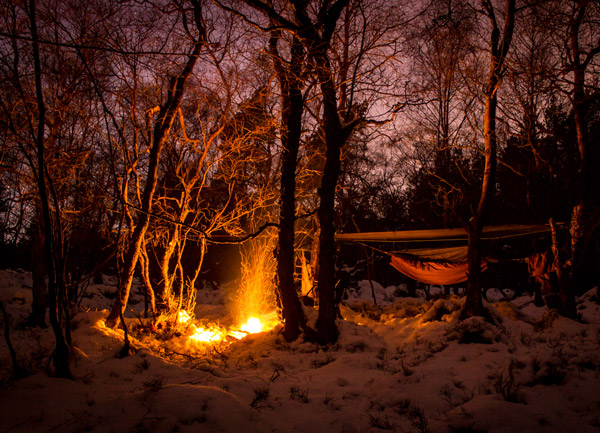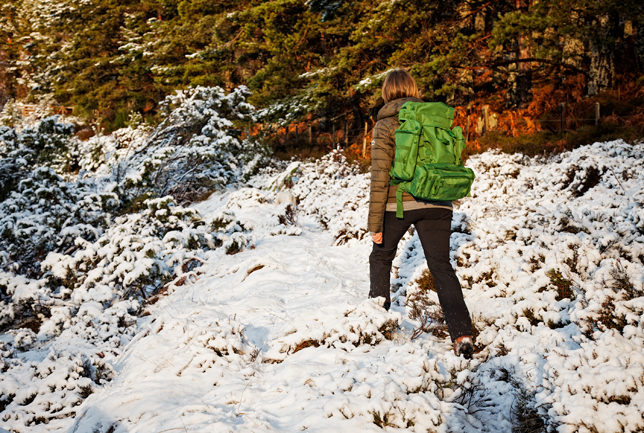DD Adventure Blog
Journals and guides from the DD Hammocks team and special guest writers - read through the blog entries for exciting expedition reports, helpful camping tips, and inspirational photos of set-ups and spectacular scenery across the whole world!
Guest Vlog: Scottish Winter Hammocking with Tom Langhorne
Hi, Tom from Fandabi Dozi here in my first of a series of videos for DD Hammocks showing you some essential camping skills. In this edition I am highlighting camp placement and fire starting in a wintery backdrop.
As soon as I heard that it had been snowing heavily in the Scottish Highlands, I decided to head up to Glenmoriston near Loch Ness. When I arrived, I was greeted by clear blue skies and a thick blanket of fluffy snow covering the forest. These are the coldest conditions I have hammock camped in. With daylight fading quickly after the long journey, I got to work splitting and defrosting logs and setting a fire with pine fatwood and feather sticks. I spent the evening huddled next to the fire, drinking tea, eating chocolate, playing my bamboo flute and carving a spork for a friend’s Christmas present.
I hope you enjoy the video, I will be back soon with more!
Tom's Tips:
Camp placement

Where exactly you set up camp can dramatically determine what temperatures you will experience during the night. Due to the fact hot air rises and cold air sinks, its best to avoid gullies and the bottom of valleys. Although, the top of ridges should also be avoided as they will likely be much windier. Other characteristics of the land will also affect the surrounding temperature. For example, large bodies of water (lochs and big rivers) will be act as heat sinks and may reduce the temperature of the landscape around them. South facing slopes will be warmer than north facing, and camping under tree cover may have less dew compared to an open area. Due to these reasons I set up my camp on a moderate altitude on a south facing slope, in a forest and away from large bodies of water.
Other factors to think about when choosing a camp spot are known as the "Four Ws". These are: Wind (where is it coming from and how will it effect my comfort and my fire?), Water (is there a drinking water source, or is this area likely to flood?), Wood (is there enough firewood in the area?) and Widow-makers (is anything going to fall on my head in the nigh,t and is there anything dangerous in the area?).
Fire technique

The paradox of fire is that it is hardest to create when you need it the most. However, there are some useful tricks to help you get started in wet and cold conditions. In the video I harvested and used a piece of “Fatwood”. This is basically a piece of wood from a pine tree that contains high quantities of resin. This resin comprises of a highly flammable substance called terpene. This fatwood can then be scraped into a fine dust to catch a spark, or used as a natural fire extender. You can now find fatwood for sale in many outdoor shops, but it can easily be harvested from the wild and its very handy to have on you when you are out in the woods.
As most of the moisture in wood is held in the bark, I split dead-standing logs to get to the drier wood inside. You can then carve thin slivers from the inner wood to make “feather sticks”. This increases the surface area of the wood allowing it to catch fire more readily. It is also a good idea to lay split sticks on the ground before lighting your fire on top of them. This keeps your tinder off the cold, wet ground giving it a better chance to get going. In the video, you see me make a small reflector wall made from wet, sodden logs. The wall helps reflect some of the heat back to you, keeping you a bit warmer.
Leave No Trace Fires

In Scotland, we are very lucky to have the right to camp wherever access rights apply. In order to keep these rights, we all have a responsibility to clean up after ourselves when out camping. Although most people agree that you should clean up your fireplace, exactly how is debatable and depends on the environment you are in. Before setting out on this trip, I first got permission from the land manager to light a fire in the area. When I found a spot to set my fire, I dug away the surface turf, trying my best to avoid large tree roots and put the turf to one side. I then compacted the soil in the fire-lay to reduce the amount of heat moving deeper into the ground. When packing up camp, I soaked the ash and coals with water, making sure all fire was extinguished. Any half-burned logs were buried and the soaked coals and ash were scattered. I then aerated the soil again, before replacing the turf. Always check your local access rights, and ensure you have the landowner's permission before starting any fire.
What I love about doing trips like this is the new-found appreciation you have afterwards about the simple things in life. A glowing fire, a cup of tea, a piece of chocolate, a sip of whisky, these all seem like the summit of your life goals when you are in the woods. It’s like pressing a reset button in your mind. I had never spent so long in the cold by myself before and what I enjoyed the most about this trip was my relationship with the fire. It might sound a bit mad, but when you are alone, the fire becomes your best friend and it’s the only thing that can keep you warm and give you hot meals. As most of the wood was frozen, it took constant attention to keep it going and I had to work out a system of thawing out logs before I could burn them. It was a new experience for me. I hope you enjoyed the video and I will be back with another one as soon as I can.
By Tom Langhorne a.k.a Fandabi Dozi - Check out Tom's YouTube channel, Facebook and Instagram for more.
*****
There you have it! armed with a little extra knowledge and the right gear, you can enjoy spending the night outdoors comfortably, safely, and responsibly no matter the time of year. For further winter camping tips, check out our previous blog entry for some more great advice.
If you liked this post feel free to share it:
TweetAbout the writer
Tom Langhorne
My name is Tom and I am a freelance Bushcraft instructor, mountain leader and Youtuber. Ever since I was a child I have been fascinated by bushcraft and survival skills and would spend most of my days in the forest making dens, lighting fires and shooting bows and arrows. While at university I started a Youtube channel (Fandabi Dozi) to share my lighthearted videos of my wilderness adventures. The past two years I have been doing a series looking at the survival skills of the 17th Century Highlanders. The growth of the channel has now led me to follow a career in the outdoors and film-making. You may also recognise me from the DD product videos too! My main mission with my work is to help reconnect with our natural and cultural heritage through the practice of wilderness living skills, in order to better understand ourselves and our place on this planet.
 GB | GBP
GB | GBP 





